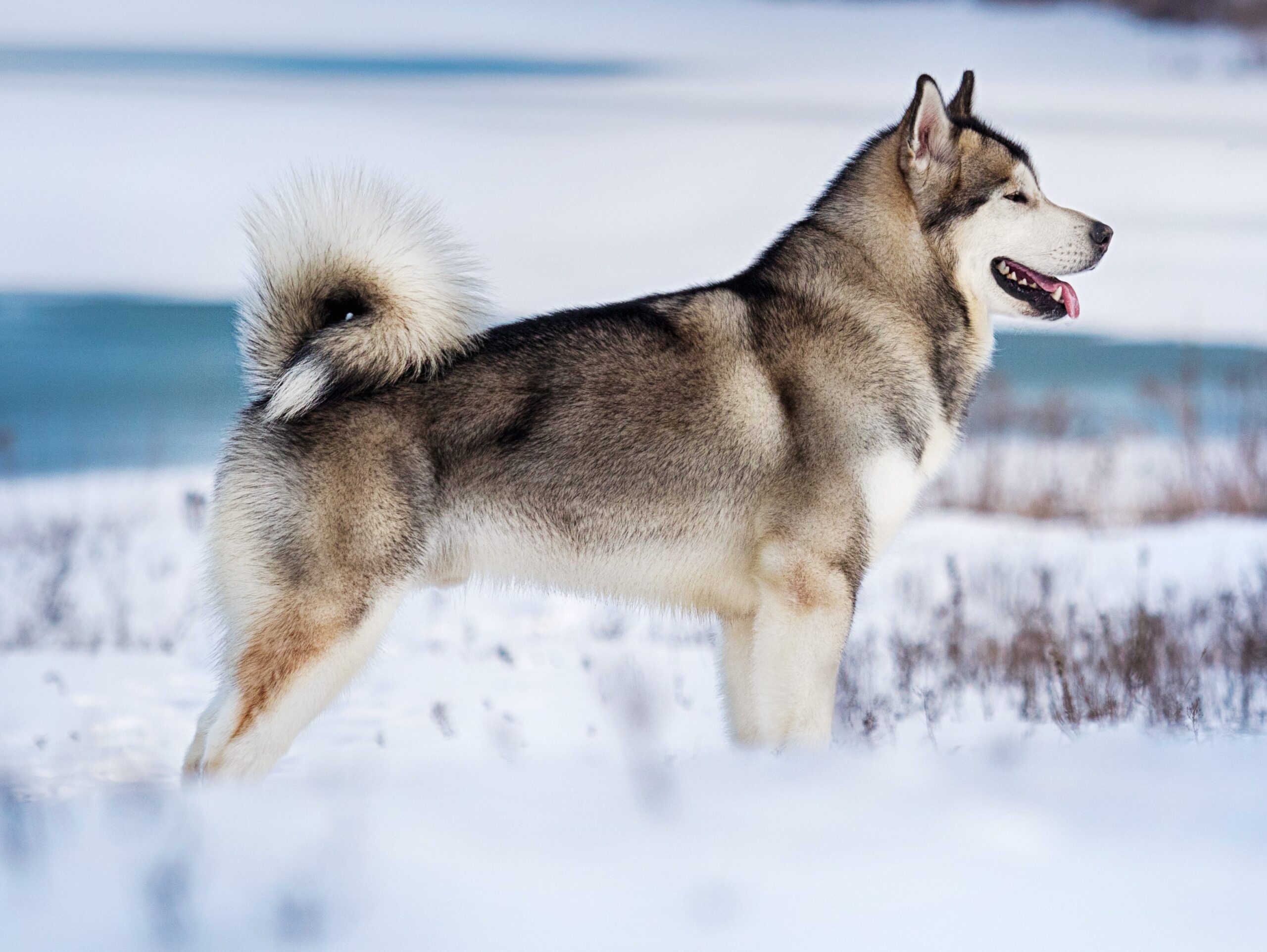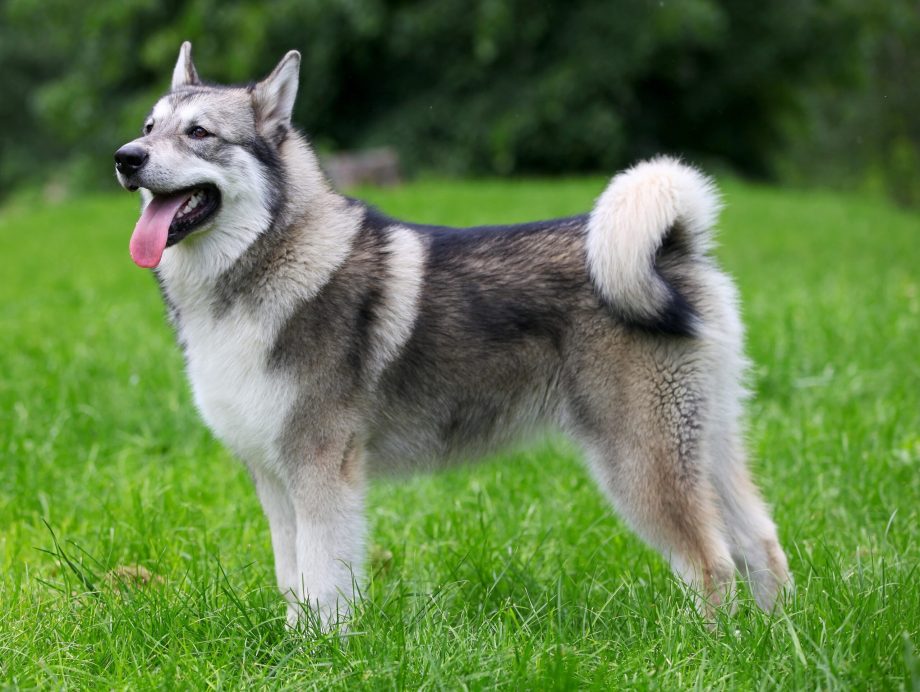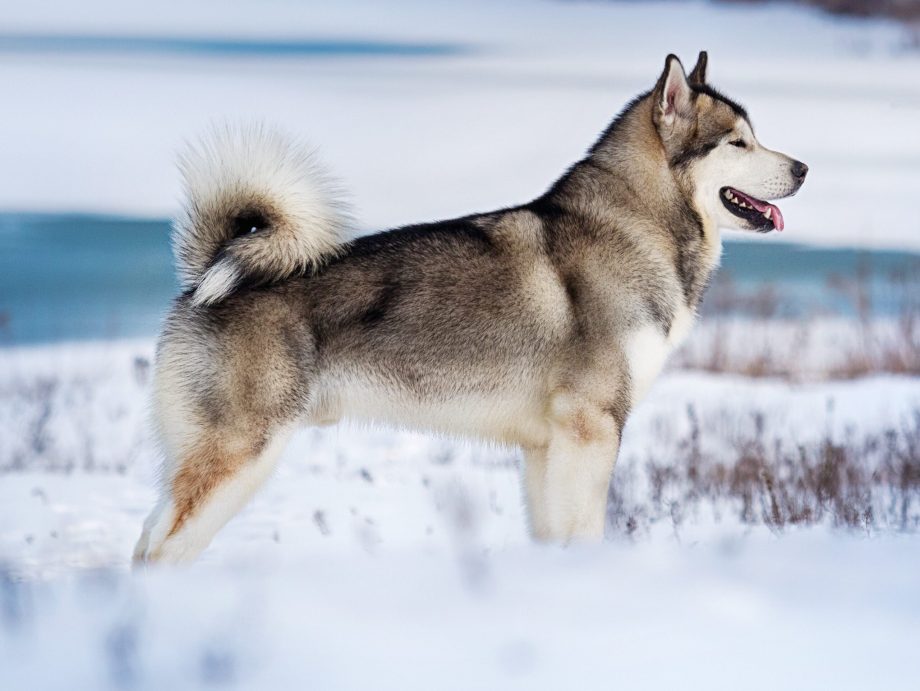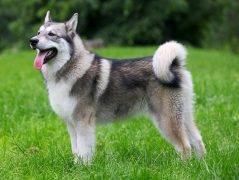Alaskan Malamutes are powerful, active dogs originally developed as sled dogs to pull heavy loads over long distances. The Malamute is built to survive its environment with a thick double coat designed to protect it from extreme weather and is also characterised by its plumed tail.
They are friendly, intelligent dogs who love people and as such make wonderful companions full of personality. They are however very strong-willed and obedience training is essential. Their physical strength also means that this dog is not suitable for handling by children or anyone without the physical means of holding the dog. In spite of their friendly nature toward people, the same cannot be said of other dogs, with whom they can be aggressive. They are also not suitable to live with other small furry animals and have a deep instinct to hunt down and kill other animals. Their impressive coat requires daily grooming and they have a major moult at least once a year.

History
The Malamute is thought to have been bred by the Malimiut Inupiaq people of Alaska, who developed the dog to pull heavy loads over long distances. The Malamute shares a close genetic relationship with the Siberian husky and the Alaskan husky.








